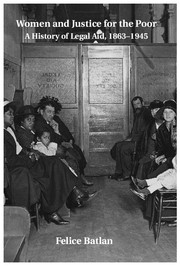Book contents
Conclusion
Published online by Cambridge University Press: 05 May 2015
Summary
By the mid-1960s many of Arthur von Briesen and Reginald Heber Smith's greatest ambitions for legal aid had been realized. President Lyndon Johnson's War on Poverty included expanding legal aid to the poor through federal grants to a variety of legal aid organizations, old and new. These programs generated debates and contestation among politicians, American Bar Association officers, state governors, Supreme Court justices, and even United States presidents.
For decades, beginning in the 1960s, Earl Johnson Jr. was in the midst of these developments as the second director of the Office of Economic Opportunity's Legal Service Program. He remained one of legal aid's greatest proponents, as well as a chronicler of its history. I eagerly awaited his three-volume history of legal aid, To Establish Justice for All (2014), which promised a comprehensive analysis of legal aid from the nineteenth century through the 1980s. But instead it offered the standard early history of legal aid, tracing its beginnings to the Legal Aid Society of New York, heralding Reginald Heber Smith, missing the work of women's organizations and social workers, and offering little discussion of the forty-year period between the 1920s and the 1960s. With the best of intentions, Johnson also replicated Smith's assumptions, measuring the success of legal aid according to traditional ideas of prestige and status in the legal profession, noting the Ivy League–educated lawyers, large law firms, and high-ranking politicians who worked in and supported legal aid. As in the past, professional prestige in legal aid was still closely associated with masculinity.
Women and Justice for the Poor moves away from that standard narrative and demonstrates how a multitude of actors with diverse agendas and institutional interests – men and women, lay lawyers, social workers, and professional lawyers – created and then fought for control over legal aid. Much of the heterodoxy associated with legal aid ended after World War II. In 1945, the National Association of Legal Aid Organizations counted a total of 142 legal aid organizations in operation nationwide, including 32 independent legal aid societies, 16 departments of social service agencies, 55 volunteer bar committees, and 4 public bureaus.
- Type
- Chapter
- Information
- Women and Justice for the PoorA History of Legal Aid, 1863–1945, pp. 215 - 224Publisher: Cambridge University PressPrint publication year: 2015



